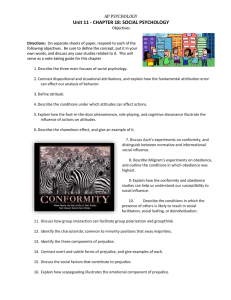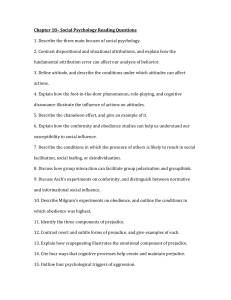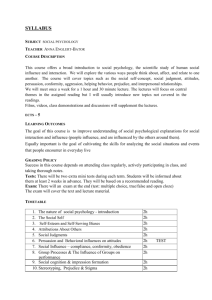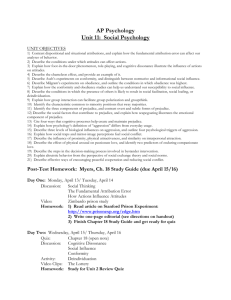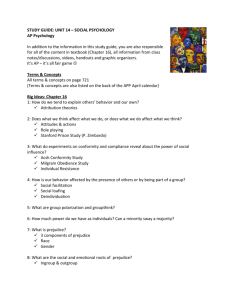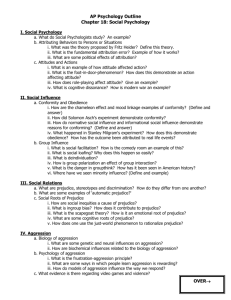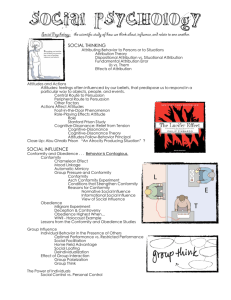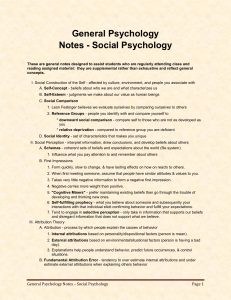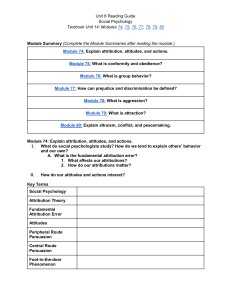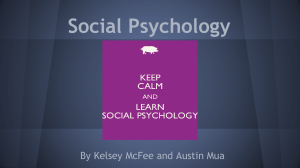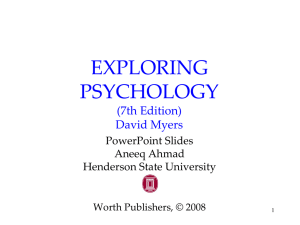Chapter 18 Study Questions
advertisement
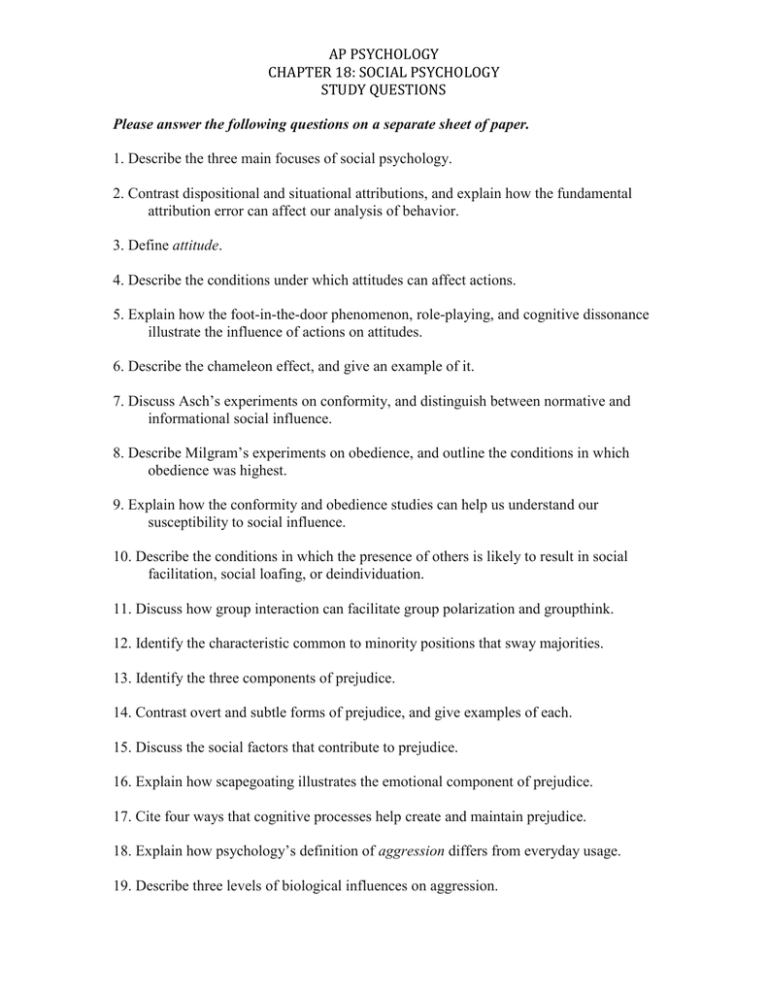
AP PSYCHOLOGY CHAPTER 18: SOCIAL PSYCHOLOGY STUDY QUESTIONS Please answer the following questions on a separate sheet of paper. 1. Describe the three main focuses of social psychology. 2. Contrast dispositional and situational attributions, and explain how the fundamental attribution error can affect our analysis of behavior. 3. Define attitude. 4. Describe the conditions under which attitudes can affect actions. 5. Explain how the foot-in-the-door phenomenon, role-playing, and cognitive dissonance illustrate the influence of actions on attitudes. 6. Describe the chameleon effect, and give an example of it. 7. Discuss Asch’s experiments on conformity, and distinguish between normative and informational social influence. 8. Describe Milgram’s experiments on obedience, and outline the conditions in which obedience was highest. 9. Explain how the conformity and obedience studies can help us understand our susceptibility to social influence. 10. Describe the conditions in which the presence of others is likely to result in social facilitation, social loafing, or deindividuation. 11. Discuss how group interaction can facilitate group polarization and groupthink. 12. Identify the characteristic common to minority positions that sway majorities. 13. Identify the three components of prejudice. 14. Contrast overt and subtle forms of prejudice, and give examples of each. 15. Discuss the social factors that contribute to prejudice. 16. Explain how scapegoating illustrates the emotional component of prejudice. 17. Cite four ways that cognitive processes help create and maintain prejudice. 18. Explain how psychology’s definition of aggression differs from everyday usage. 19. Describe three levels of biological influences on aggression. AP PSYCHOLOGY CHAPTER 18: SOCIAL PSYCHOLOGY STUDY QUESTIONS 20. Outline four psychological triggers of aggression. 21. Discuss the effects of violent video games on social attitudes and behavior 22. Explain how social traps and mirror-image perceptions fuel social conflict. 23. Describe the influence of proximity, physical attractiveness, and similarity on interpersonal attraction. 24. Describe the effect of physical arousal on passionate love, and identify two predictors of enduring companionate love. 25. Define altruism, and give an example. 26. Describe the steps in the decision-making process involved in bystander intervention. 27. Explain altruistic behavior from the perspective of social exchange theory and social norms. 28. Discuss effective ways of encouraging peaceful cooperation and reducing social conflict.
